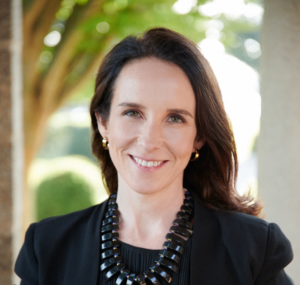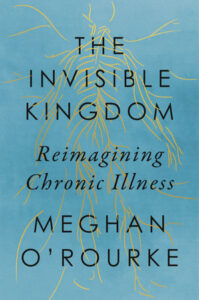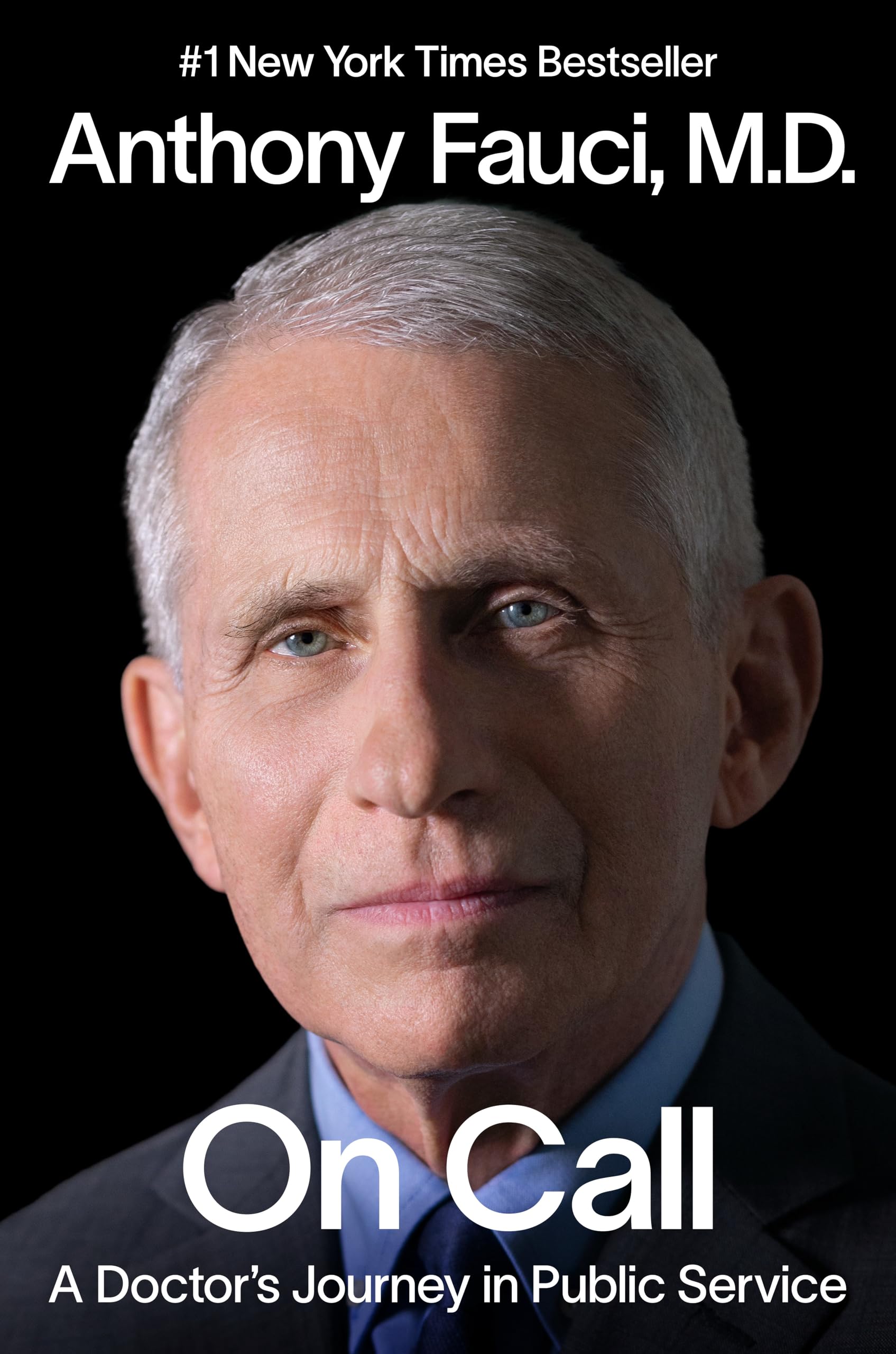This piece is excerpted from The Invisible Kingdom: Reimagining Chronic Illness by Meghan O’Rourke, a guest at Amherst College’s 2023 LitFest. Register for this exciting celebration of Amherst’s literary life.


The stories we tell about illness usually have startling beginnings—the fall at the supermarket, the lump discovered in the abdomen during a routine exam, the doctor’s call. Not mine. I got sick the way Hemingway says you go broke: “gradually and then suddenly.”
One way to tell my story would be to say that I got ill just after college in the late 1990s, when I began experiencing daily hives, dizziness, chronic pain, and drenching night sweats, long before any doctor believed I was sick. Another way to tell my story would be to say the illness took hold in the days after my mother died on Christmas Day of 2008, when I caught a virus, a debilitating fatigue overcame me, my lymph nodes ached for months, and I slid into an exhausted fog I attributed to grief. A month later, a doctor found that I had Epstein-Barr virus. Still another way would be to say that my illness became unignorable roughly three years after my mother’s death, starting in January 2012, on a windy beach by a derelict hotel in Vietnam. Jim, my partner, and I were reading by the water when I noticed a strange rash on my inner arm, seven or eight raised red bumps arranged in a circle. It looks like Braille, I thought. But what was it trying to tell me?
The beach was a mess that day, scattered with the skeletal, alien branches of palm trees. I was in the grips of the discomfiting loneliness that can come when wild weather presses around you. “Look at this,” I said to Jim, who glanced at the angry, inflamed rash and said, “That’s strange.”
It was strange—stranger than I imagined at the time. I had no idea then that I was living at the edge of medical knowledge. I had been intermittently unwell since I graduated from college in 1997 and now was getting steadily worse, like a person who can’t swim moving step by step into deep water. But no one knew why. At first no one even believed I was ill—not even I did, exactly. Trapped in a body that wasn’t working, I embarked on a complicated and obsessive quest for answers. I was met by turns with cutting skepticism but also authentic concern from clinicians, friends, and colleagues. I eventually received an initial diagnosis of an autoimmune disease, but the diagnosis did not fully explain my symptoms. I tried many therapies and approaches toward healing during my search for understanding and effective treatment; in the meantime, the mysterious chronic illness l lived with got worse, not better, leaving me almost entirely unrecognizable to myself. As a child, I would wake early in the mornings with a sense of life’s promise as sun drifted into my bedroom, feeling joy at what lay ahead. After I reached my sickest, I dreaded waking, because my symptoms were always worse in the morning, and because I knew the day would be full of suffering without explanation.
In the grips of a malaise I had no name for, I needed understanding. I turned to literature, science, philosophy, doctors, healers, historians, researchers, and other patients. Along the way, I became interested in the contradictions and complexities of our medical system, in the obstacles faced by patients whose illnesses are poorly understood, and in the question of what might help me live with illness, even if I could not overcome it. While there was no single answer, one thing stood out: above all, I wanted recognition of the reality of my experience, a sense that others saw it, not least because human ingenuity might then be applied to the disease that had undone me, so that others might in the future suffer less than I did.
And there are a lot of people suffering. We are all familiar with the ubiquity of long-term illnesses like heart disease and cancer, which are well-defined and viewed as unquestionably “real” (even if much remains to be learned about them). But what is less well-known is that there is also a silent epidemic of chronic illnesses that are often marginalized, contested, or even unrecognized—illnesses that include autoimmune diseases, myalgic encephalomyelitis/chronic fatigue syndrome (ME/CFS), post-treatment Lyme disease syndrome (or chronic Lyme disease, as many patients call it), dysautonomia, mast cell activation syndrome, fibromyalgia, and now, on a scale that is only beginning to be recognized, long COVID. If every age has its representative signature disease, I contend that this type of chronic illness is ours.
These illnesses are, of course, distinct from one another. But they are often characterized by dysregulation of the immune system and/or the nervous system, which are powerfully intertwined in our bodies. And some researchers suspect that there may be meaningful overlap in how these illnesses work and in the people who have them—in other words, if you have one of these illnesses, you may be more likely to have others. They are conditions that modern medicine knows surprisingly little about and that, evidence suggests, can be triggered by multiple causes, including the body’s response to infections. The category is also growing in size; to take one example, autoimmune diseases are rising at what scientists call “epidemic” rates. They now affect from 24 million to 50 million people in the United States.
When I got acutely sick in 2012, such illnesses were poorly studied and rarely discussed—and often seen as manifestations of underlying mental illness. Marginalized patients who felt mysteriously unwell had to band together into activist groups to try to legitimize their suffering. A decade later, as I finish this book a year into the coronavirus pandemic, things look a bit different. Autoimmune disease is a mainstream subject. Doctors now tout the importance of the microbiome and gut health, which not long ago seemed like a fringe idea. Most dramatically, the COVlD-19 pandemic has given us a keen sense of how variable the human response to infection can be, vividly dramatizing the ways that a virus or bacterium (or multiple viruses and bacteria) can collide with an individual’s biology to unleash a host of perplexing aftereffects in the body, often incited by the individual’s immune system. The scope of the problem of COVlD-19 long haulers has begun to bring more attention to these chronic syndromes.
Even so, many people are still suffering in silence with poorly understood illnesses, and plenty of medical practitioners continue to dismiss patients like me, whose symptoms roam the body but who have what appear to be normal test results. As Susan Sontag pointedly observes in Illness as Metaphor, illnesses we don’t understand are frequently viewed as manifestations of inner states. The less we understand about a disease or a symptom, the more we psychologize, and often stigmatize, it. Doctors once thought of multiple sclerosis as a form of hysteria. Tuberculosis (or consumption, as it was originally called) was viewed, until scientists discovered the bacterium that causes it, as a disease that afflicted romantic young souls. For decades, certain forms of cancer were thought to be a consequence of repressed emotions.
Today, we like to believe that we are rational about disease and immune to this kind of metaphorical thinking. But research shows that medicine is still riddled with such views, particularly when it comes to hard-to-identify illnesses, which are often seen as symptoms of some deeper psychological or existential problem. While advances in our understanding of mental illness constitute one of the great successes of twentieth-century medicine, patients with poorly understood illnesses confront an often reflexive categorization of their physical symptoms as mental ones—which presents a barrier to proper care and research. If medicine can’t see or name the problem, it can neither study it nor treat it.
The medical uncertainty compounds patients’ own uncertainty. Because my unwellness did not take the form of a disease I understood, with a clear-cut list of symptoms and a course of treatment, even I at times interpreted it as a series of signs about my very existence. Initially, the illness seemed to be a condition that signified something deeply wrong with me—illness as a kind of semaphore. Without answers, at my most desperate, I came to feel (in some unarticulated way) that if I could just tell the right story about what was happening, I could make myself better. If only I could figure out what the story was, like the child in a fantasy novel who must discover her secret name, I could become myself again.
It took years before I realized that the illness was not just my own; the silence around suffering was our society’s pathology.
This is an excerpt from The Invisible Kingdom: Reimagining Chronic Illness by Meghan O’Rourke. It was republished here with permission from Penguin Random House.
Meghan O’Rourke is the author of the poetry collections Sun In Days, Once and Halflife, as well as the memoirs The Invisible Kingdom and The Long Goodbye. The recipient of a Guggenheim Fellowship, a Lannan Literary Fellowship, two Pushcart Prizes and the inaugural May Sarton Poetry Prize, among many other awards, O’Rourke writes for The New Yorker and The Atlantic Monthly and is the editor of The Yale Review. O’Rourke resides in Brooklyn, N.Y., where she grew up, and Marfa, Texas.




